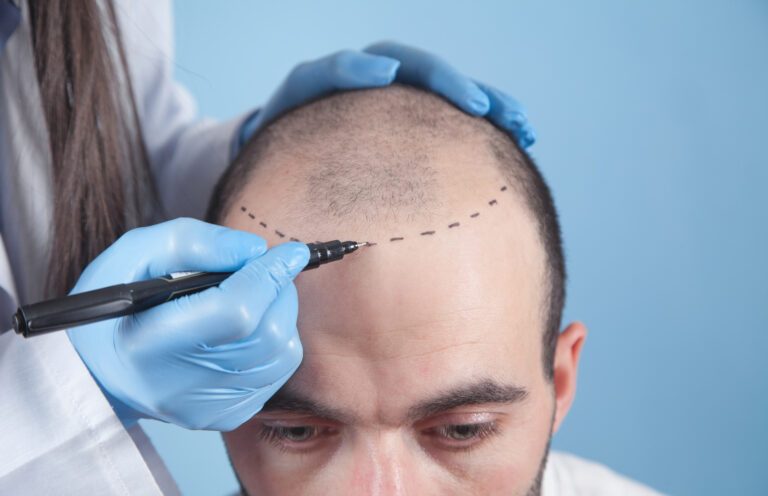Hair Transplants For Long Hair: Everything You Need To Know
Bald spots and thinning hair can hurt your self-esteem, but hair transplants can help restore your crowning glory. So, what’s keeping you from getting the procedure that’ll save your locks?
Perhaps you have long hair and worry about getting a buzz cut and linear scars from the procedure. If you cannot afford to take time off for a post-transplant recovery, we have good news for you!
Read on to learn everything you need to know about hair transplants for long hair.
Can You Get a Hair Transplant for Long Hair?
Absolutely! You can get a hair transplant with long hair, and no one will be able to tell you’ve had one.
Gone are the days of shaved heads and visible scars after getting the procedure. Best of all, you can keep the rest of your hair at its original length.
Modern techniques distribute healthy hair follicles from one area of the scalp to where you most need them.
The process is a long, meticulous one, but you can expect fuller, thicker hair with minimal downtime.
Surgical Planning Considerations
Before the procedure, you’ll undergo a pre-operative assessment with your surgeon, regarding:
- Your previous medical and surgical history
- Your goals and expectations
- The condition of your [1] hair and scalp
- The possibility of supplemental therapy and follow-up procedures
Procedures for Hair Transplant With Long Hair
There are two types of hair transplant procedures for long hair:
Long Hair Follicular Unit Extraction (Long Hair FUE)
Long Hair FUE is the most advanced technique in the field of hair transplantation, with absolutely no need for shaving. It works for both men and women with different hair lengths.
The process uses an image-guided micro-punch tool that measures about 0.6–1 mm to extract donor hairs (follicular units).
To qualify for the procedure, you should get a grade of 1–3 on the Fox test. It’s how surgeons analyze the ease of extraction and intactness of your follicular units.
Here’s a quick overview of how Long Hair FUE is performed:
- Trim the donor hairs to about 1–2 mm.
- Numb the scalp using local anesthesia.
- Clip about 0.7–1 cm sections of hair to provide a better view of the extraction site.
- Punch grafts containing about 1–2 hairs with the aid of surgical magnifying loupes.
- Extract punched grafts using forceps.
- Insert the grafts into tiny incisions on the transplant site.
Advantages of Long Hair FUE
These are the benefits you can enjoy from a Long Hair FUE:
1. Immediate Visualization of Result
Because long hair camouflages the surgery area, you can get a preview of your probable post-op result.
2. Less Pain
Since Long Hair FUE doesn’t require stitches or excision of a large area of skin, there’s a lot less pain after the procedure.
Over-the-counter pain relievers are usually enough to manage the pain the night after the hair transplant. Many patients report zero pain after 24 hours too.
3. Exceptional Results
The precise method of extraction causes less trauma to the follicular units. Because of this, the graft survival rate is at 90–95%.
The surgeon has good control of the spacing and level of depletion of donor sites as well. You’ll still have natural-looking hair right after the procedure.
4. Convenient
Long hair FUE is an outpatient procedure that only requires local anesthesia. There are minimal post-surgery restrictions, and you can return to work as early as the next day.
5. Faster Recovery
The procedure is sutureless and non-invasive. With proper care, the extraction sites will heal in a few days.
You can get back to your normal routine right after the procedure, with the exception of intensive physical activities. After two weeks, you’re safe to hit the gym or go hiking.
6. Undetectable Scarring
You can keep the natural length of your hair, which is perfect for concealing post-transplant redness and scarring.
Besides, punched grafts leave behind super tiny, dot-like scars. Even if you cut your hair short, surgery marks will stay virtually undetected during the healing process, and even more so in regrowth.
Follicular Unit Transplantation (FUT)
Unlike FUE, FUT requires the removal of about a 6- to 10-inch strip of skin from the scalp. The donor site is usually the back of the head, which is dense with thick hair.
After extraction, the surgeon will sew the area close, and then divide the strip into individual hair grafts. The implantation proceeds the same way as FUE.
With long hair, you can camouflage the visible band of scars. However, post-transplant pain is another issue.
If you have textured hair and fail the Fox test, your surgeon may elect you for a FUT procedure.
Final Thoughts
Hair transplant for long hair and afros is now possible, thanks to state-of-the-art tech and modern techniques.
With its long list of benefits, Long Hair FUE is fast becoming the gold standard in the field.
Still, it’s best to consult a board-certified surgeon to discuss your options and expectations.
remove the







